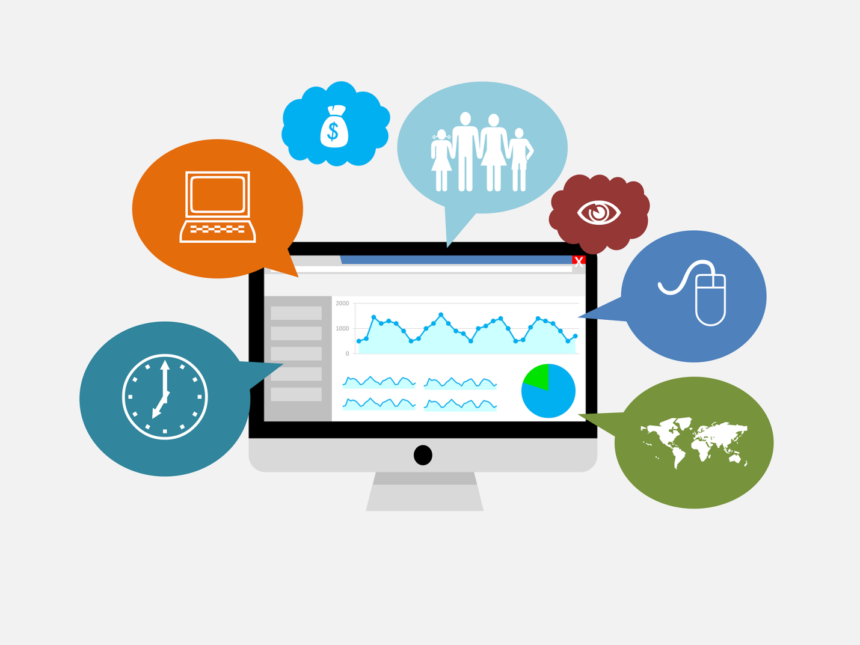The number of available marketing tools continues to grow, but one platform remains the most powerful in marketers’ arsenal, and that’s Google Analytics.
Estimates show that 52.9% of all websites on the internet use Google Analytics to track their online performance.
So if you’re a business owner with a website that drives e-commerce sales for your company, you need to have a good understanding of how Google Analytics works and how it can help your business grow and prosper.
So without further ado, let’s dive right in.
What’s Google Analytics?
Your company’s website is the hub of your online presence; it provides a holistic view of the effectiveness of your marketing campaigns, as it tracks how many people visit your official website after coming across your marketing efforts on social media pages or on ads.
Google Analytics is a web service that enables you to track the results of your digital marketing campaigns by providing you access to more than 200 different metrics. It does so by integrating a tracker in your website’s code and records the activities and information of users who visit your site. After they leave, the data is sent to the Google Analytics server.
Lastly, the data is aggregated into four major levels for the website owner to analyze. These categories include user level, session level, page view level, and event level.
What are Google Analytics Metrics?
Google Analytics metrics are units of information that provide you with details of certain aspects of your website and how they performed in a specific time period. Understanding these metrics is important, as they help you understand your customers better.
As a result, you can enhance their user experience and focus on producing content that’s more relevant and useful for your users. Moreover, Google Analytics metrics can also help you increase your SERP rankings and increase your conversions and consequently, profits.
Here are the most critical Google Analytics metrics you need to keep track of this year.
1. The Source of Your Traffic
This metric helps you keep an eye on your website traffic and where it’s coming from, which might include referrals, social media, organic searches, or direct hits. You can find this metric on Google Analytics by clicking on Acquisition and then overview.
By learning what your greatest source of traffic is, you can focus more resources on improving that aspect of your marketing strategy and achieve better results.
2. Social Overview
‘Social Overview’ helps you measure the impact of social media marketing on your website. You can find out on which networks your content is being shared in and how your on-site engagement is doing. This will also enable you to set unique goals for social media marketing and track its results.
3. Bounce Rate
Bounce rate refers to the percentage of users who view other pages on your website after landing on the home page. By going to the Audience option on Google Analytics and then to Overview, you can see your website’s bounce rate, identify the parts of your landing pages that might be causing problems, and then plan a solution accordingly.
4. Conversions
Conversion rate refers to the percentage of users who carry out a desired action on your website. The desired action could be anything from an online purchase to an email sign up. Google Analytics lets you track your conversion rates in the Audience section.
5. Behaviour Flow
Go to the Behaviour section on Google Analytics and then to Behaviour Flow. This will take you to a page that displays data about the way users navigate your website. You can follow their journey on your site by seeing what page they visited first and how they move on from there. By tracking the behaviour of your visitors, you can develop a strategy that leads to stronger attractions on your pages so traffic smoothly flows from one page to another.
6. Unique Pageviews
Unique Pageviews tells you how many times a user returned to a single page during a session. What attracts users to a page multiple times is remarkable content. By identifying the page on your website that rates the best for Unique Pageviews, you can make sure that the rest of your pages are also of the same quality.
7. Average Time on Page
This metric shows you the average amount of time users spend on a single page on your website. The greater the time spent, the greater the level of engagement users have with the content. You should aim to increase your average time, as this will also increase the rate of conversions and your profits.
8. Exit Percentage
Exit percentage is a metric that shows the last page on a session. This helps you identify the webpage with the highest exit percentage so you can figure out the reason behind why your users might be leaving and what you can do to stop them.
9. Locations
By finding out which countries your users are coming from through the Locations metric on Google Analytics, you can target them in a better way in your next digital marketing campaign. Localized content that your users can relate to will help you boost your conversions and profits.
10. Site Speed
The loading speed of your website has a great impact on its user experience and your business. By tracking which pages are taking longer to load and causing bounce rates to increase, you can take appropriate measure to resolve the problem effectively.
Experts At Devebyte Can Help You Out!
Get in touch with Devebyte and have our team of experts work with you on your digital marketing strategy.
We’re one of the leading digital marketing agencies in Edmonton, AB dedicated to helping clients strengthen their online presence. We can help you manage your ad spends, develop a website with design and optimize your conversions with our excellent SEO services.


Leave a Reply
You must be logged in to post a comment.